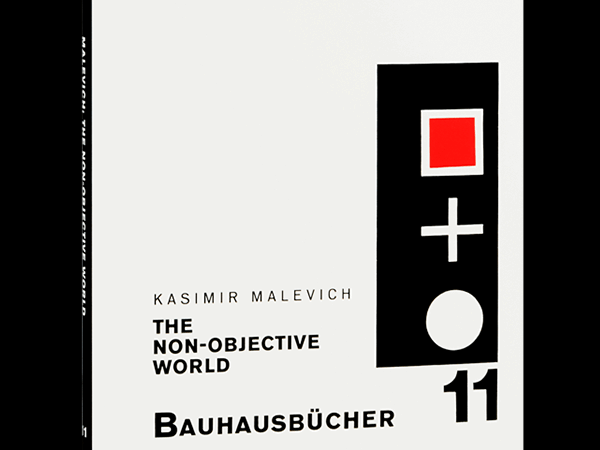Inventing Greenland: Designing an Arctic Nation
By Bert De Jonghe
Actar Publishers
Paperback, 150 pages, € 29
WITH A TOTAL population of 56,000 spread across a landmass twice the size of all other Nordic countries combined, Greenland’s overall density hovers at just over zero. The precursors to Greenland’s modern-day inhabitants were settlers both indigenous and European, dating back millennia and including the Saqqaq, Independence I-II, and Dorset cultures, as well as the Greenlandic Vikings who settled in the far south in 982 (led by Erik the Red). All these prior cultures and settlements, however, disappeared, leaving only archaeological records. From an anthropological perspective, the entirety of Greenland’s present population, whether indigenous or European in origin, are relatively recent arrivals: the modern indigenous population (which makes up 90% of the island’s total) is descended from Thule Inuit, who first arrived in the 14th century after crossing over from the shores of what is now northern Canada; the remaining 10% consists almost entirely of ethnic Europeans whose roots on the continent go back at most several hundred years.
“Urbanization in Greenland is entangled in a wide range of historic processes, which were often beyond the control of the Greenlandic people”
Examining such a sparse region through the lens of urbanization may seem counterintuitive, but Bert De Jonghe’s Inventing Greenland makes a compelling argument for the usefulness of such a study—not just as a microcosm of societies across the Arctic, but also in the pursuit of a uniquely Greenlandic sense of city and community. While the region’s population prior to the modern era was largely nomadic—building temporary structures and relocating based on changes in weather and wildlife—the 18th and 19th centuries saw it consolidate into permanent cities. These cities took both their names and their systemic structures from Denmark, the sovereign colonial power in Greenland, and discouraged nomadic lifestyles in favor of centralized industries with permanent worker populations, while outlawing certain modes of speech and dress. Even Greenland’s multicolored buildings, which to outsiders seem whimsically decorative, are based on the Danish system of urban color coding:
Within Danish colonial design typologies, commercial and institutional buildings were red; hospitals were yellow; police stations were black… This approach provided a means of codifying and exercising control over Greenland’s resources and urban landscapes. The linkage of color to function and land use reflected a material economy firmly anchored in natural resources located beneath the land, ice, or ocean surface. With the age of aviation and the advent of WWII, Greenland became a strategic military outpost for the Allies, and in 1940 the Danish ambassador to the US, in defiance of German occupiers, granted American forces access to the area known as Thule in the island’s extreme northwest. The US military would remain at the site, expanding it and other sites across Greenland as WWII transitioned into the Cold War era. As De Jonghe illustrates early in the book, Greenland in the 20th century was already an “aeroscape”, a flight grid connected by faraway points where airports served as both transit and community hubs, when geopolitics forced it to accommodate air traffic well beyond its own national interests. For better and for worse, Greenland in the second half of the 20th century was economically tied to both Europe and North America via trade, tourism, and economic aid.
With the age of aviation and the advent of WWII, Greenland became a strategic military outpost for the Allies, and in 1940 the Danish ambassador to the US, in defiance of German occupiers, granted American forces access to the area known as Thule in the island’s extreme northwest. The US military would remain at the site, expanding it and other sites across Greenland as WWII transitioned into the Cold War era. As De Jonghe illustrates early in the book, Greenland in the 20th century was already an “aeroscape”, a flight grid connected by faraway points where airports served as both transit and community hubs, when geopolitics forced it to accommodate air traffic well beyond its own national interests. For better and for worse, Greenland in the second half of the 20th century was economically tied to both Europe and North America via trade, tourism, and economic aid. Thule Air Base, northwestern Greenland. Photo by Peter Prokosch via GRID-Arendal
Thule Air Base, northwestern Greenland. Photo by Peter Prokosch via GRID-Arendal
Against such a complex backdrop of local and global interdependencies dating back decades or centuries, solutions that actually serve the local populace are difficult to identify and even more difficult to enact. The notorious “Block P” housing development (below), built by the Danish government in the 1970s and at one time housing nearly 1% of Greenland’s entire population, was a visually as well as culturally incongruous artifact. In its attempt to offer stability via a massive centralized residential block, it ended up exacerbating the very problems it tried to solve: it was generally disconnected from the outdoors, with narrow hallways that made navigating in bulky winter clothes difficult, and its lack of any provisions for traditional elements such as dogs or dogsleds meant many who moved from villages found it hard to adapt. High maintenance costs and lack of interest sealed its fate, and the building was demolished in 2012, by far the largest such demolition in Greenland’s history. Block P, Nuuk. Photo by Peter Løvstrøm via Creative Commons
Block P, Nuuk. Photo by Peter Løvstrøm via Creative Commons
The current government of Greenland has gone all-in on tourism, investing in updated infrastructure intended for visitors that includes new hotels and museums, as well as expanded airports. While much of this push centers around the positive-sounding but vague idea of “environmental tourism” (particularly in the UNESCO-protected town of Ilulissat, pictured below, with its access to stunning glaciers and icebergs), it has darker implications for both local economies and Greenland’s broader environment. Whatever the negatives of expanding Greenland’s “aeroscape” throughout the 20th century may have been, it led to a system where local economies often centered around airports, which became community hubs where locals could shop, eat, see distant relatives, and often earn a living. The government’s current plan would expand the international airports in Greenland’s southwest, while shuttering more remote ones, particularly on the already severely isolated eastern shore, condemning the fragile semi-autonomous communities that have grown up around these vital hubs to closure. Several degrees more serious is the implication, underlying the government’s full-tilt shift to tourism, that Greenland’s glaciers and icebergs are rapidly disappearing. The book defines this push to get visitors into the country while these features remain as “last-chance tourism”, adjacent to “dark tourism” if somewhat less extreme. The brutal irony is that each new flight into the country accelerates this decline, and that Greenland’s tourist industry, while insignificant on a global scale, is nonetheless hastening its own demise.
Several degrees more serious is the implication, underlying the government’s full-tilt shift to tourism, that Greenland’s glaciers and icebergs are rapidly disappearing. The book defines this push to get visitors into the country while these features remain as “last-chance tourism”, adjacent to “dark tourism” if somewhat less extreme. The brutal irony is that each new flight into the country accelerates this decline, and that Greenland’s tourist industry, while insignificant on a global scale, is nonetheless hastening its own demise.
All that said, Inventing Greenland tends toward an overall more positive outlook, highlighting various trends in recent years that embrace the country’s indigenous roots from a meaningful rather than performative perspective. These include a shift in architecture toward a new “Greenlandic modern” style, using locally-sourced stone, gravel, and concrete instead of imported metal prefabs. Such buildings, including the Katuaq Cultural Center in Nuuk, eschew the traditional colonial color scheme in favor of whites and grays, setting them apart as a new vernacular architecture that is less dependent on imported materials. On the academic side, technological advances have allowed for improved archiving of indigenous artifacts such as the incredible “stick maps” of Greenland’s rocky shores, serving as a shareable 21st-century version of the region’s traditional practices of storytelling and “memory culture” that go back centuries.
Overall, while Inventing Greenland examines urbanization in a strikingly unconventional setting, the book is far from a curiosity. The topics on which it focuses—climate change, colonialism and anticolonialism, sustainability, global tourism and transit networks—are among the foremost issues facing the 21st century. Ultimately, it addresses these and other issues with a clear-headed approach, and posits Greenland’s indigenous traditions as a solution without overly valorizing or exoticizing them.




